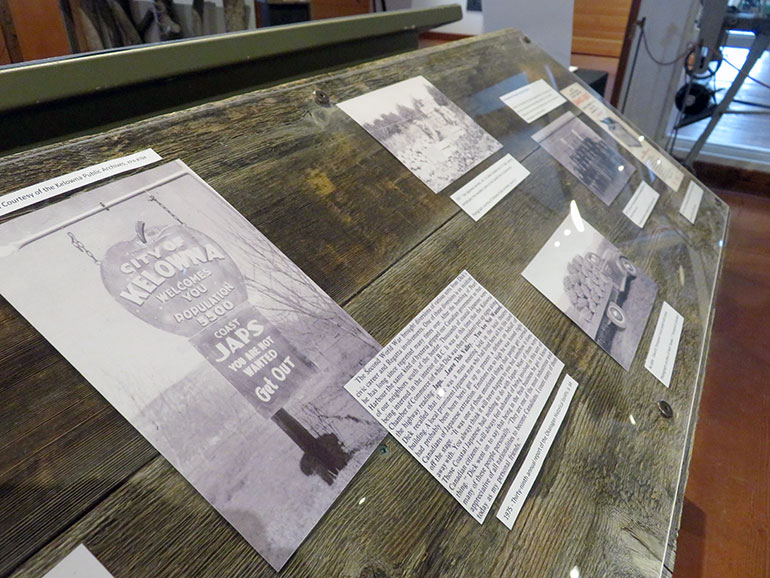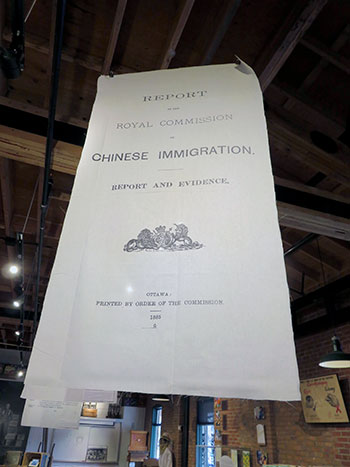
Artifacts at the Okanagan Wine and Orchard Museum shows the racism Chinese and Japanese immigrants faced when they arrived in the Okanagan.
Chinese and Japanese settlers had significant influence on Okanagan agriculture
A new display at the Okanagan Wine and Orchard Museum emphasizes the perseverance of early Chinese and Japanese immigrants, despite the discrimination they faced.
As part of a Cultural Studies course, UBC Okanagan students Kezia Elaschuk and Safeera Jaffer researched the experiences of early Chinese and Japanese agriculture workers. Drawing on archival materials, oral history narratives from a Chinese-Canadian family, along with photographs and agricultural implements borrowed from members of the Japanese-Canadian community, the exhibit provides a multi-faceted presentation of the lives and struggles these people faced when they came here in the late 1800s and early 1900s.

A copy of the Royal Commission on Chinese Immigration is on display at the Okanagan Wine and Orchard Museum as part of a UBC student-led research project.
The exhibit presents only a few of the many stories of Chinese and Japanese immigrants in the Okanagan during this period, explains Elaschuk.
“This exhibit aims to highlight not only the discrimination and hardships that these communities faced, but to also display the ways they resisted and persevered through the interpersonal and legislative forms of discrimination.”
The stories of these communities have often been marginalized in the region’s history of agriculture development, but the students hope that the exhibit does not simply provide a window into the past.
Safeera Jaffer says that the exhibit also encourages visitors to examine the ways they are personally implicated in an ongoing history.
“We want people to be inspired by the exhibit to start a conversation in their own circles about who does the work of agriculture in the Okanagan today,” she says. “This requires acknowledging the forms of discrimination workers from Latin America and the Caribbean face, as well as learning about initiatives to ensure these workers share the rights that Canadians have.”
The exhibit was created as a student project for Community Engaged Research in Cultural Studies, a course which requires students to complete research projects for community partners.
The exhibit is on display now through the end of August at the Okanagan Wine and Orchard Museum, 1304 Ellis Street, in Kelowna.
—30—
 Student's killer on parole
Student's killer on parole Charges after investigation
Charges after investigation Hostage was on captor
Hostage was on captor  Regulating power prices
Regulating power prices Gen X is raking it in
Gen X is raking it in LeBlanc laying groundwork
LeBlanc laying groundwork US vetoes UN resolution
US vetoes UN resolution $100M Nassar settlement
$100M Nassar settlement 12 Trump jurors picked
12 Trump jurors picked Rates slow green economy
Rates slow green economy Vicinity hires president,
Vicinity hires president, Record housing starts
Record housing starts Warriors ready for Round 2
Warriors ready for Round 2 Kalamalka Bowl cancelled
Kalamalka Bowl cancelled Rockets live to fight on
Rockets live to fight on Rihanna's parenting ‘hack’
Rihanna's parenting ‘hack’ Tarantino scraps film
Tarantino scraps film Munn talks cancer battle
Munn talks cancer battle



